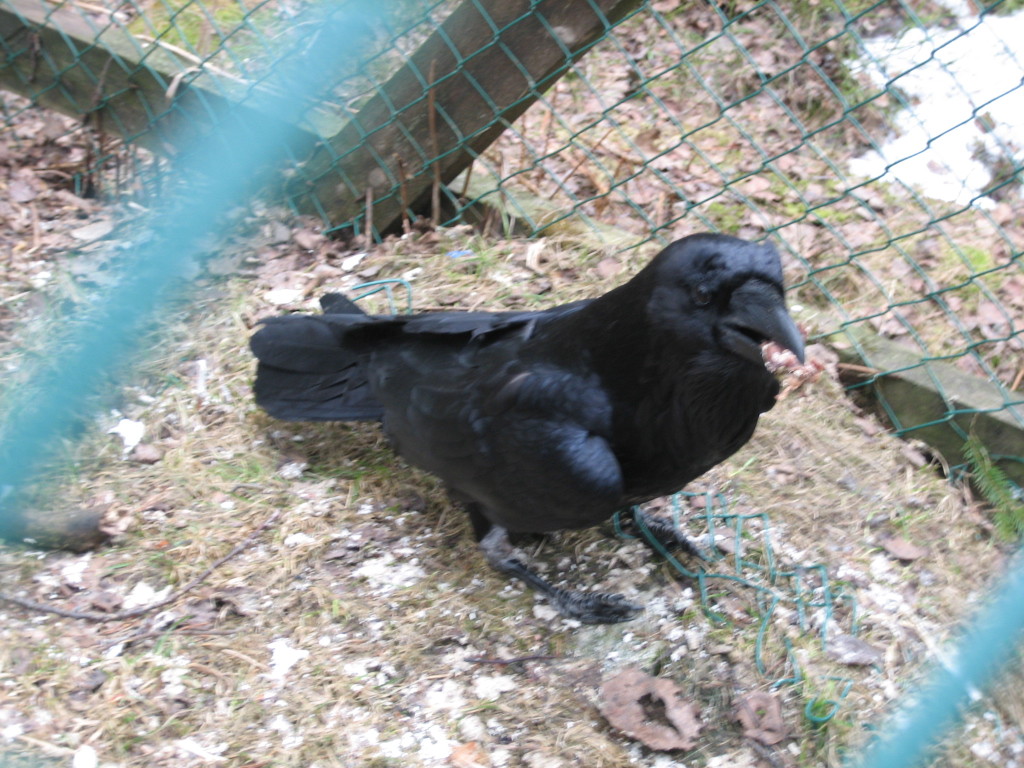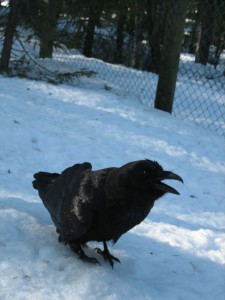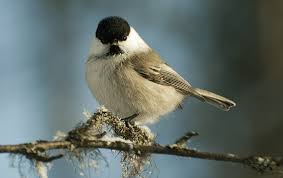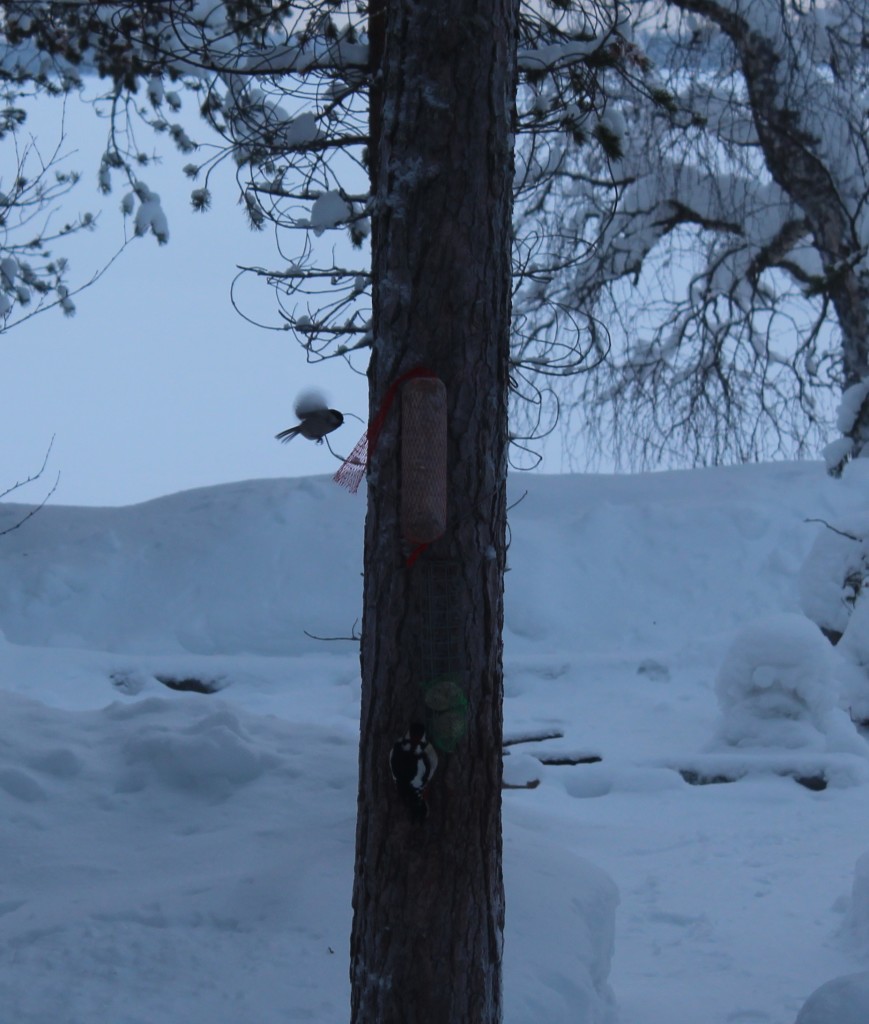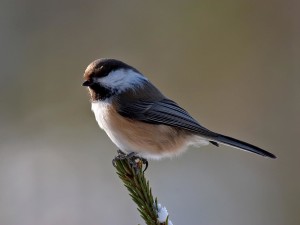(Written in February 2015)
The other day I found myself sitting in the complete silence of Lapland. I was out ice-fishing alone on a lake in the wilderness of Lapland. There was no wind and this day even the air force of Finland was not out practicing flying, like the day before. I could see there were a few other parties of fishermen on the ice, but they were very far away. The lake is situated far enough from roads, so there were no traffic sounds, either.
Then I suddenly realized I did not hear anything, and I do mean ANYTHING! It was complete silent. (In the case I would suffer from tinnitus now, this would probably be the only sound I would hear at this particular moment.) What a special feeling! I really started to LISTEN to the silence.
In between I caught some perches and the sound of them grabbling in the snow on the ice was for a moment the only voice I heard. The catch of a fish resulted immediately in the voice of a Raven (Corvus Corax) in the near forest. It of course prepared itself to take care of the leftovers from the catch. The Raven made a silent flight over my place to note the size of my fish. I could clearly listen to the sound from its wings in the air. The Ravens are the scavengers of the nature. If you leave some caught fish you do not want to take home, you can be sure they are gone from the ice the next day.
The Common Raven (Corvus corax), also known as the northern raven, is a large all-black passerine bird. Found across the Northern Hemisphere, it is the most widely distributed of all corvids. It is one of the largest corvids, and is possibly the heaviest passerine bird; at maturity, the common Raven averages 63 centimetres (25 inches) in length and 1.2 kilograms (2.6 pounds) in mass. Common ravens can live up to 21 years in the wild. Young birds may travel in flocks but they later mate for life, with each mated pair defending their own territory.
Common Ravens have coexisted with humans for thousands of years and in some areas have been so many that people have regarded them as pests. Part of their success as a species is due to their diet; they are specialists in finding sources of nutrition. They eat insects, cereal grains, berries, fruit, small animals, and food waste.
Some notable feats of problem-solving give evidence that the common raven is unusually intelligent and they like to live near people. I have listened to a Raven “talking” a couple of years ago in the Ranua Wildlife Park. Over the centuries, it has been the subject of mythology, folklore, art, and literature. In many cultures, including the indigenous cultures of Scandinavia, ancient Ireland and Wales, Bhutan, the northwest coast of North America, and Siberia and northeast Asia, the common raven has been revered as a spiritual figure or god.
On my ice-fishing trip I suddenly hear a sound of a snowmobile. A quick survey over the lake tells me there is a snowmobile starting to move far, far away at the other shore of the lake. An ice-fisher decided to move from one place to another, and the sound of it is so clear. As there are no obstacles for the sounds to move along the ice, the sound travels really long ways.
After a short ski trek back to the cabin (and yes, I left some fish for the Raven, too), to purge some nice-sized perches for my dinner, I see the small Willow Tit (Poecile montanus) jumping around on the ground and in the trees near the cabin. Their tender voice is the only thing I hear as I enter the yard. I have put some grease balls in the trees for them to eat during cold days. These birds need to find nutrition as well as the Raven, because they are also resident and do not migrate during winter. I just love the sound and the sight of the little beautiful bird. They are not afraid of people and they do not seem to be easily scared away if you just move around normally on the yard.
The commonest call is a nasal zee, zee, zee, but the notes of the bird evidently vary considerably. Occasionally a double note, ipsee, ipsee, is repeated four or five times.
The Willow tit has to share the grease balls with a stubborn Woodpecker (Dendrocopos major), who is also visiting the yard. It is also a resident bird.
I sometimes find myself checking on the Willow tits if I some day would find the Siberian tit among them. I would really want to see that, too, as I am in Lapland.
The grey-headed chickadee or Siberian tit (Poecile cinctus, formerly Parus cinctus) is a passerine bird in the tit family Paridae. It is a widespread resident breeder throughout subarctic Scandinavia and northern Asia, and also into North America in Alaska and the far northwest of Canada. It is also resident as the Willow tit, and most birds do not migrate. Curiously (with respect to its name), the bird has no grey on its head, which is black, white, and brown. It has a larger area of black under the bill than the Willow tit. And slightly longer than the Willow tit (13,5-14 centimetres).
So I end up sitting at the terrace watching Willow tits and the Woodpecker picking some grease from their “dinner table”. This was a wonderful, silent day and the sounds from the few species of birds in Lapland at the moment, were really easy to separate from each other. There will certainly be more noise and impossible to separate different sounds from each other within a month of two, as all the migrating birds return to Lapland in the spring.


